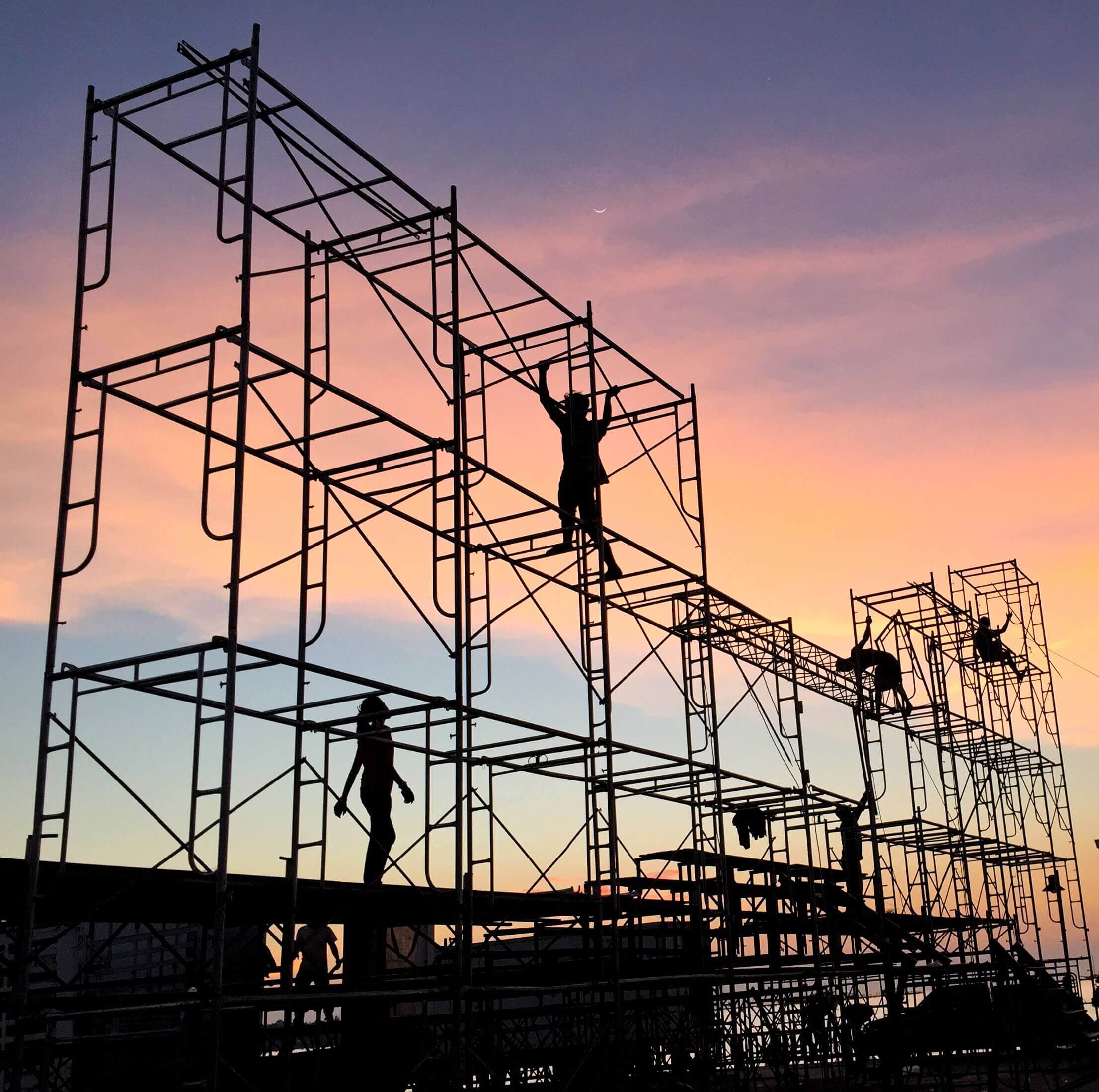
The types of self-supporting scaffolds include: Because frame scaffolds are the most common type of supported scaffold. Supported scaffolds consist of one or more platforms supported by outrigger beams, brackets, poles, legs, uprights, posts, frames, or similar rigid support. There are many different types of scaffolds used. local weather conditions, particularly wind forces.what exposures might occur, such as noise or ultraviolet (UV) radiation.the skill and competencies required to erect, use, maintain, alter and dismantle the scaffold.plant and equipment that will be used on or near the scaffold.the surface on which the scaffold will be erected (ground conditions, the structural integrity of the surface to support the scaffold and its load).the layout of the workplace, including proximity to public areas.the height of the scaffold to be erected.When assessing risks relating to scaffolds you should consider things such as: mixing components from different scaffold systems (for example, do not mix aluminum tubing with steel tubing).mobile plant and other workplace traffic.scaffolding collapse (before, during and after placement of the scaffold).Some examples of the hazards associated with work involving the erection, use, maintenance, alteration and dismantling of scaffolds include: Scaffolding work means the erection, alteration and dismantling of a scaffold. Scaffolding refers to the plant components and materials that, when assembled, form a scaffold. Scaffolds, once properly erected, are a control measure to prevent the risk of persons and objects falling when working at height. Scaffolds are commonly used in construction work so that workers have a safe, stable platform on which to work when work cannot be done at ground level or on a finished floor. There are a number of different scaffold types, having different rules and regulations surrounding their assembly, fall protection requirements, & inspection procedures.Ī scaffold is a temporary structure specifically erected to support access or working platforms. If you work on scaffolding, you must be able to recognize the hazards associated with the type of scaffold you are using, and know what to do when you recognize something that just isn’t safe. Safe welding on a suspension scaffold requires a grounding connector at least the size of the welding lead and insulated material covering the suspension ropes and hoist.Every year nearly 100 fatalities and 10,000 injuries occur world over on scaffolds despite numerous safety regulations aimed to prevent such incidents.Unlike supported scaffolds, no methods may be used to increase working height on a suspension scaffold – that means ladders are a no-go.

This type of scaffold requires ramps, ladders, walkways or similar means of access when suspended more than 24 inches.Guardrails or personal fall-arrest systems are required at heights of more than 10 feet.Ropes must also be inspected for defects before and after each work shift.
CATENARY SCAFFOLD INSTALLATION PROFESSIONAL
Employers must provide hazard training specific to the type of scaffold.Īny support device must rest on a surface able to support at least four times the load exerted on it by the scaffold when operating at the rated load of the hoist, or at least 1.5 times the load imposed on it by the scaffold at the stall capacity of the hoist, whichever is greater.Īll direct connections must be reviewed by a competent professional before use.We have reviewed our content for bias and company-wide, we routinely meet with national experts to educate ourselves on better ways to deliver accessible content.įor 15 years our company has published content with clear steps to accomplish the how, with high quality sourcing to answer the why, and with original formats to make the internet a helpful place. Our commitment is to provide clear, original, and accurate information in accessible formats. We are incredibly worried about the state of general information available on the internet and strongly believe our mission is to give voice to unsung experts leading their respective fields.

Our content experts ensure our topics are complete and clearly demonstrate a depth of knowledge beyond the rote. We perform original research, solicit expert feedback, and review new content to ensure it meets our quality pledge: helpful content – Trusted, Vetted, Expert-Reviewed and Edited. We write helpful content to answer your questions from our expert network.


 0 kommentar(er)
0 kommentar(er)
